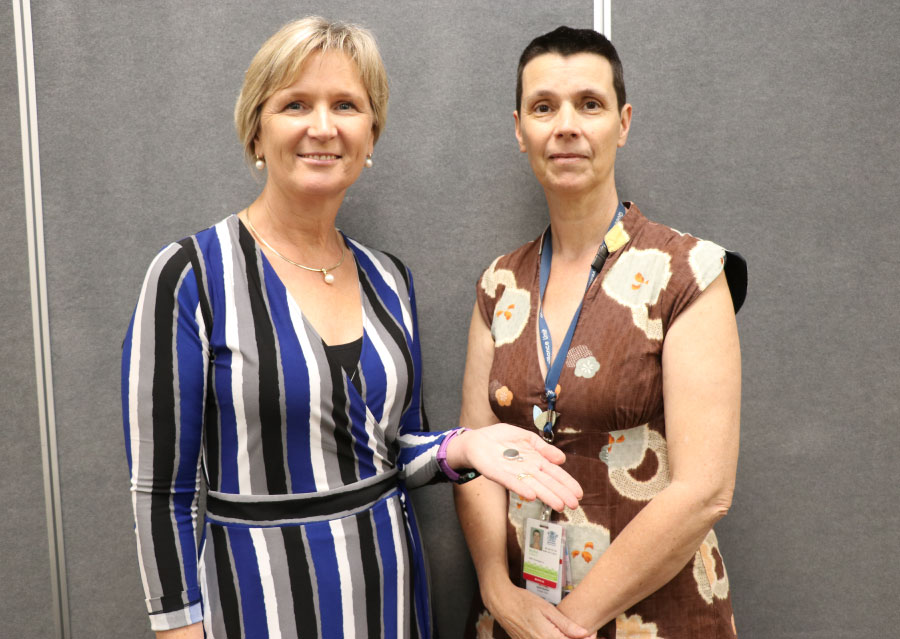The original contents of this article were reviewed and updated on 18 December 2020
With Christmas fast approaching, our attention is focused on efforts to prevent and better identify button battery ingestion and insertion. Dr Ruth Barker, Senior Medical Officer at the Queensland Children's Hospital (QCH), Director of the Queensland Injury Surveillance Unit (QISU) and President of KidSafe Queensland, has hosted a number of educational sessions over the past few years including podcasts to stress the dangers of button batteries and the need for early diagnosis and treatment of an ingestion injury. Dr Barker has been actively involved in button battery prevention following the 2015 coronial inquest into Summer Steer’s tragic death from injuries sustained from a button battery ingestion in 2013. The inquest made several recommendations for action across health, industry and regulatory bodies. Tragically, there have been two further children, who have died from button battery ingestion; one earlier this year (2020) from the Gold Coast, the other in Victoria in 2015, shattering families and affecting the staff who cared for these children. It is not only Christmas time that we have to be vigilant; we are reminded to be button battery aware at ALL times.
Dr Barker said children find the batteries ‘just about anywhere’ and while in most cases the source of the battery is unknown, cheap toy-like products such as novelty items and small torches are a major culprit. Younger children of around one to three years of age are more likely to ingest a battery whereas older children (three to four years) are more likely to insert the battery in their nose or ear. However, there have been incidents where older children and adults have swallowed batteries and infants under 12 months have been ‘fed’ batteries by siblings. "The battery charge is responsible for the damage. It triggers hydrolysis of water into hydrogen and hydroxide ions. The hydroxide ions cause a caustic injury that can cause progressive damage even after the battery has been removed," Dr Barker said.
Batteries most at risk of causing damage are the 20 millimetre 3-volt lithium button batteries. Lithium batteries are most problematic as the lithium holds the charge longer and enables the battery to have a longer shelf life. Only 1.2 volts or more of charge is required to cause damage and the larger lithium batteries still have sufficient charge to kill even when they are ‘spent’ or ‘dead’. The larger lithium batteries are also more likely to lodge in the oesophagus. Zinc air batteries, commonly found in hearing aid devices, cause less damage internally (as they require air to be active) but can still damage the nasal passage and ear canals. It takes around two hours for an ingested battery to erode into the oesophageal wall, making this injury a time critical emergency and a logistic challenge for health services. It is however, the ongoing damage that occurs over days to weeks that causes serious injury and death, (usually associated with erosion into major vessels).
In some cases, parents or carers are aware a battery has likely been ingested, having seen it happen, heard a gulp, cough or choking sound, or because a battery is missing. In cases when it is unclear if a battery has been swallowed, the child’s symptoms can be non-descript, but can include: partial food refusal, drooling, a croup-type cough, chest pain (may present as grunting) and later; upper GI bleeding, epistaxis (nose bleeds), or ear/nasal discharge. Dr Barker said food, liquid and vomit may move past the lodged battery, but once it is further embedded into the oesophageal wall, even solids can pass.
The Queensland Children’s Hospital battery ingestion pathway recommends a neck to bottom x-ray for ingestions (done in one film for smaller children), and the focused views if ear/nose insertion is suspected. In the x-ray, look for the ‘halo’ around the battery to help confirm diagnosis.
While Dr Barker said some efforts are being made to help increase the safety of batteries, and that the issue may eventually be engineered out of products, this will not occur for many years and the dangers are still present and real. Parents and clinicians alike still need to #bebuttonaware. Parents are encouraged to call the Queensland Poisons Information Helpline (13 11 26) for 24/7 fast expert advice and up to date management.
Clinicians should familiarise themselves with the QCH foreign body guidelines which contain information specific to button batteries. The ENT/ paediatric gastroenterology teams are available to provide clinical advice.
Queensland Health staff can view the education session video on QHEPS (search 'PSU education sessions') and via the iLearn education sessions on Button Batteries. Visit KidSafe Queensland to see their work on button battery safety.

PICTURED ABOVE (L-R): Wendy Fennah from our Patient Safety and Quality Improvement Service with Dr Ruth Barker. Wendy is holding a type of button battery in her palm.